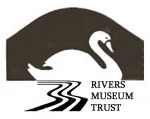
In 1865, a Swiss chemist named Dr George Wander discovered the nutritional benefits of barley malt. He found it to be full of complex carbohydrates and naturally occurring vitamins.
Dr Wander began to manufacture malt extract and launched a new food drink, which he called ‘Ovomaltine’. It became an instant hit in Sweden, and was drunk hot on the ski slopes.
In 1909, Wander’s son, Albert, established the British company A. Wander Ltd. He added sugar, whey and beet extract to the barley malt to improve the taste of the drink, and the name was changed to Ovaltine for the British market. (it was actually mis-spelt on the patent application)
In 1913 a small factory was built in Kings Langley to manufacture Ovaltine. The original workforce consisted of just 13 people, but the business expanded rapidly.
The company purchased three farms in 1928, totalling around 450 acres, on which they established the Ovaltine Dairy, Egg Farm and Barley farm. Here they produced the main ingredients for Ovaltine: barley, milk and eggs. They worked to a high standard and were acknowledged at the time as the best in the world of their type. (The barley farm was called Numbers Farm and is on Egg farm Lane, opposite the factory)
These farms became a key part of the marketing strategy, featuring regularly in advertising to promote the drink’s wholesome qualities. With the Ovaltine Dairy Maid reinforcing the idea of the drink as being full of goodness, Ovaltine became popular with doctors as a health product.
By the mid-twentieth century, the factory was employing nearly 1,500 people.
One reason Kings Langley was chosen as the site for the factory was because of its proximity to the Grand Union Canal. The coal needed to fuel the boilers could be easily delivered by narrow boats from the Warwickshire collieries and the product could easily be delivered to the London and the Docks.
Originally, Ovaltine was marketed as an energy booster. Water or milk could be added, and it could be consumed hot or cold. Later, advertising would highlight Ovaltine’s ability to relax the drinker as it was caffeine-free, making it the perfect bedtime drink.
The most famous Ovaltine marketing campaign was ‘The Ovaltineys Show’, which had one of the most successful jingles of the era. It was broadcast on the radio every Sunday evening at 5.30pm. This was a time when few people had televisions, and radio was an all-important medium with huge audiences.
The show was created especially for children and included singing, secret codes, puzzles and stories. The Ovaltineys became a special club, and gained over 5 million members in its first four years. Children applied for membership using forms found inside Ovaltine tins. They were sent a badge, a rule book, secret code and a list of special rules that all members needed to abide by.
Ovaltine continued to grow in popularity throughout the twentieth century. Ovaltine was the official drink of the 1948 Olympics, with 25,000 cups served to the competitors. It was also carried up Mount Everest by Sir Edmund Hillary in 1953.
Ovaltine became the largest liquid malt extract producer in the world. This was not only used in Ovaltine, but in the inside of Maltesers, biscuits and sweets. Ovaltine was also available in the form of chocolate bars, Easter eggs, cookies and breakfast cereals.
At the factory, they also began to produce Options hot chocolate.
The art deco style Ovaltine factory in Kings Langley has become a well-known local landmark.
Production in the factory ceased in 2002, and it has now been redeveloped as luxury apartments. The former Ovaltine Egg Farm has been converted into energy-efficient offices which house Renewable Energy Systems (R.E.S.). The dairy farm has been converted into residential homes. The barley farm is still arable land and grazing but the barns have been converted into homes.
Despite the end of production in the Kings Langley factory, Ovaltine continues to be sold today in over 54 countries worldwide. In Hong Kong it is sold in cafes, served hot or on ice. In Brazil, the powder is commonly mixed with vanilla ice cream. And in Switzerland, it continues to be associated with skiing and snowboarding.
Article taken from the Watford Observer Nostalgia Series by Kelly Pells
Reproduced courtesy of The Watford Observer
http://www.watfordobserver.co.uk/news/nostalgia/memories/
With thanks to Kings Langley Local History & Museum Society
Extra information provided by Sandie Taylor of R.E.S.


Dear Sir: Read you blog about OVALTINE. Are you interested in MINT condition OVALTINE plastic shakers or do you know a collector who would be interested? Thank You
LikeLike
Yes the Museum would definately be interested. Please pay a visit or email media@trmt.org.uk
LikeLike
[…] We also possess a 1920s tin of its arch-rival Ovaltine. Ovaltine was originally named Ovomaltine; until a spelling mistake on a patent application gave us the shorter, snappier name. It was invented in Switzerland and launched in Britain in 1909. The Ovaltine company was a pioneer of advertising and marketing. It developed its own farms, using the most up-to-date methods and they often featured in its advertising, along with the landmark art-deco factory it opened in Hertfordshire in 1929. You can see a picture of this impressive factory here. […]
LikeLike
Why ovaltine is not produced & widely marketed in India
LikeLike